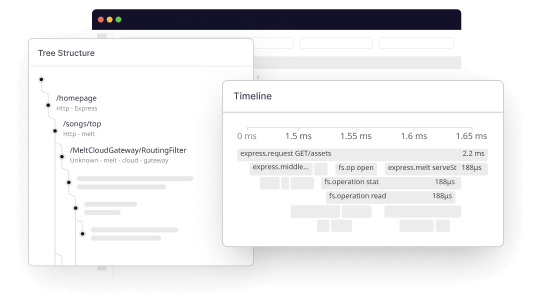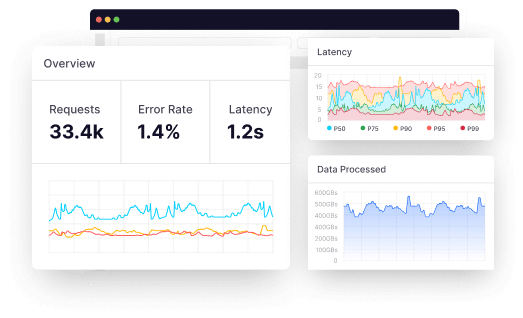90% of all the data that exists today was created in the last two years. The measures come to about 2.5 quintillion bytes produced every single day.
Everywhere you look, you will find data. There is data on your phone, on your laptop, in your email account, on your instant messengers – everything that is digital has data on it. Some of this data is structured, and most of it is unstructured.
The thing is that structured data has a lot more utility for meaningful activities than unstructured data. In this blog, let us attempt to understand structured vs. unstructured data in detail.
What is Structured Data?
Quite literally, the data that follows a well-defined structure is called structured data. Structure is basically a syllogistic format that categorizes data based on multiple attributes. This works to make it easily discoverable and accessible to humans and computer programs equally.
You can also define structured data as quantitative data.
Structured data follows a set of clear rules and logic that give it an understandable, digestible architecture. The best part of structured data is that it can be easily read and understood by modern technological implements of artificial intelligence and machine learning.
Structured data can be queried using SQL because it is meticulously organized in multiple ways to make it more discoverable. Some of the more common examples of structured data are barcodes, point-of-sale data, weblog statistics, etc.
Structured data can be human or computer-generated. The fact that it makes operations and processes simpler and more streamlined is the major reason why it is preferred over unstructured data.
Advantages and Disadvantages of Structured Data
Structured data is mostly advantageous to the users; however, it has a few disadvantages that may hinder organizational processes. Let’s understand the pros and cons of structured data.
Pros of Structured Data
- It is more accessible. Structured data has been around for longer than unstructured data. As such, there are more tools in the market that you can use to access, manage, and modify it. Furthermore, structured data can be called using SQL, which improves its accessibility more
- It is easily usable by modern technology. The well-defined architecture of structured data allows it to be readable and usable by machine learning algorithms. Querying it becomes easier for such technology
- It is human-friendly. Structured data does not need an in-depth knowledge of how it behaves/functions for it to be understood and manipulated. This makes it easier for the decision-makers to access, interpret and use it for business operations
Cons of Structured Data
- Usage Limitations. The predefined structure of the data makes it necessary to use it a certain way. This puts limitations on the flexibility and versatility of structured data
- Rigid Storage Options. Since structured data needs to be stored in a certain way, it necessitates the storage to have a predefined schema. These data warehouses are resource-intensive to manage whenever there is a need to change data requirements
Structured Data Tools
Below is a list of useful tools that can help you manage your structured data well:
- SQLite. This tool assists you with implementing a relational database that is zero-configuration, self-contained, serverless, and transactional
- PostgreSQL. This tool utilizes high-tier programming languages like C and C++, Python, Java, and more to manage structured data. Additionally, it supports SQL and JSON
- OLAP. This tool can be implemented on centralized data storage with unified data, to perform speedy data analysis that is multidimensional
- MySQL. You can utilize MySQL to embed data into the software. This tool is best used for mission-critical systems
What is Unstructured Data?
Unstructured data doesn’t have any structure to it. The data randomly gathered from various devices and online sources is more or less unstructured. You can say it leans more towards the qualitative side than the quantitative; it isn’t categorical.
Unstructured data is more characteristic and non-utilitarian; it can only be used after it is analyzed and compiled into insights that mean something to a business.
Most of the data that you see today is unstructured data. A few examples include the data gathered from social media listening, your messages, emails to a business, etc.
The proverbial “Big Data” that is in the talks today is mostly unstructured. Forbes reports that 95% of the businesses feel a pressing need for solutions to manage this unstructured data. While unstructured data can deliver useful insights when processed right, there is a need to manage it efficiently.
Advantages and Disadvantages of Unstructured Data
Unstructured data has the potential to provide great insights into business decisions. However, it is scattered, disparate, and uncategorized. The necessity to process it through intelligent data processors is imperative. Let’s look at a few pros and cons of unstructured data.
Pros of Unstructured Data
- Native and nascent. Unstructured data is stored in the format that it is created. This nascent nature allows it to be adaptable to various other file formats, increasing its versatility. Data scientists need only fetch the data they need to work with, instead of calling the entire stack
- Quick collection. Unstructured data doesn’t need to be treated prior to storing it. This makes it faster to collect and store. It can be stored as quickly as it is discovered or created
- Data Lakes. Unstructured data is stored in data lakes (large areas with data storage) which usually function on a pay-as-you-use basis. This allows companies to make their data storage cost-effective since it eliminates the need to maintain in-house data servers
Cons of Unstructured Data
- It needs experts to be digestible. Unstructured data doesn’t have any specifics or attributes from the get-go. It is just a random collection of raw information sourced from the internet. As such, data scientists are needed to process this data and make sense of it
- The need for special tools. Unstructured data can’t be utilized as-is. It needs to be processed through special data processors that sort it out enough to be utilizable
Unstructured Data Tools
It is difficult to process and manage unstructured data. However, the tools listed below can potentially make this task a lot easier for you.
- An implement run by Microsoft, Azure is an agile cloud computing platform that lets you create and manage on-premises, hybrid, and multi-cloud apps using data centers of the company
- Amazon DynamoDB is a tool offered by Amazon and offers a high-speed NoSQL database for structured data. The tool offers in-memory caching, backup, restoration, and inbuilt data security
- MongoDB is a cross-platform database program that is document-oriented. It is a source-available NoSQL-based program for structured data
- This tool facilitates managing structured data using simple programming without the need for formatting requirements
Structured Vs. Unstructured Data: Understanding The Differences
The major difference between these two data is evidently understood – one has a defined structure, while the other is collected at random. However, there are more differences between the two datasets. Let’s take a look at the key differences between structured vs. unstructured data in detail:
| Property | Structured Data | Unstructured Data |
| Sources | Structured data is usually obtained from sources like spreadsheets, online forms, OLTP systems, network and web servers, etc. | Unstructured data can be sourced from anywhere: email messages, media files, instant messages, collaboration software, and more. |
| Scalability | Structured data is stored on database schemas which makes it a bit hard to scale up or down | Unstructured data is stored in its raw format without treatment, which makes it more scalable |
| Forms | Structured data can be considered as conforming to a tabular format with a definite relationship between the columns | Unstructured data is accessible in various forms, like rich media, geo-spatial and surveillance data, etc. |
| Format | Structured data has a predefined format | Unstructured data can be anything; it has no specific format |
| Nature | Structured data can be considered quantitative; mathematical | Unstructured data is uncategorized and qualitative |
| Storage | Structured data is stored in data warehouses | Unstructured data is stored in data lakes |
| Use Case | Some of the most popular use cases for structured data are CRMs, online bookings, and accounting systems | A few use cases for unstructured data are data mining, chatbots, predictive analytics, etc. |
What is Semi-Structured Data?
Since we are discussing structured vs. unstructured data, it’s important to include semi-structured data because semi-structured data lies somewhere in the way between structured and unstructured data.
At its core, it is still unstructured and scattered; however, certain elements in this data are defined with attributes and metadata attached to them.
The presence of metadata makes this unstructured data eligible to be cataloged into repositories with some defining, structuring properties. Semi-structured data is more easily utilized than purely unstructured data because of the presence of metadata and attributes; it can be more easily processed and stored, recalled, and utilized.
One good example of semi-structured data would be a tab-delimited file. As compared to a random collection of email messages, this file would be more readable.
The Future of Data: Unstructured vs Structured, or Unified?
For your organization to benefit from the data it collects, it is important for you to maintain a single source of truth and data integrity for the company to draw from. This may necessitate using data management facilities and software catered to as SaaS.
Trends suggest that the Big Three data management platforms – Amazon, Google, and Microsoft – are likely to get more competition in the future, seeing how the market for data is growing.
Additionally, Gartner has suggested an innovative future for data in this report. They predict that data usage by entities will transform into a highly integrated, interconnected fabric of data and allied processes. A unifying data layer will form the backbone of this fabric, a single source for all the disparate applications that draw from it.
The truth is that data hasn’t fully evolved yet, and new methodologies are likely to keep emerging with time.
Conclusion
It depends on the nature of your business operations and the use of data it has that determines whether you should opt for unstructured or structured data or a mix of both. Use this guide to understand structured vs unstructured data and which one could be more advantageous to your business in the long run.





